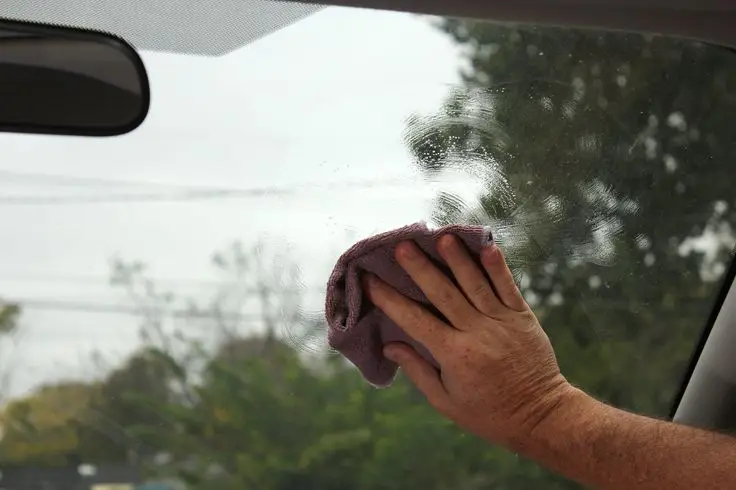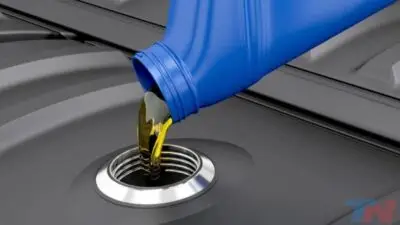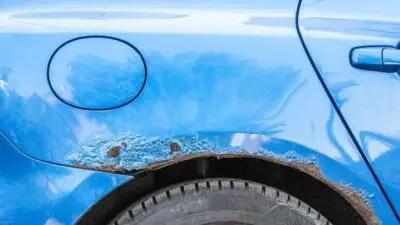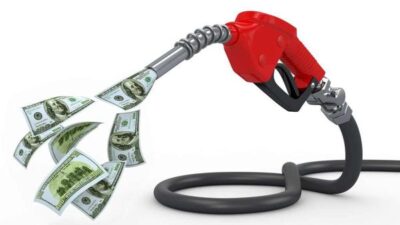Driving with a dirty or streaked windshield isn’t just annoying—it’s dangerous. Poor visibility can lead to missed road hazards, delayed reaction times, and potentially serious accidents. Keeping your windshield clean both inside and out is one of the most effective ways to improve visibility and ensure safer driving conditions.

Many drivers focus only on the outside of their windshield, but interior buildup can be equally problematic. Dirt, dust, and oils from the dashboard can create a thin film that causes glare and reduces visibility, especially at night or when facing direct sunlight. Regular maintenance, including checking your wiper blades for wear and using the right cleaning products, makes a significant difference in how well you can see through your glass.
Weather conditions present additional challenges to windshield visibility. From morning dew to heavy rain, snow, or fog, each situation requires specific strategies. Some drivers find that waxing their windshield creates a more water-repellent surface than commercial products, while others rely on winter-specific wiper blades during colder months for improved performance.
Key Takeaways
- Regular cleaning of both the interior and exterior windshield surfaces significantly reduces glare and improves visibility in all conditions.
- Inspecting and replacing worn wiper blades ensures proper water removal and prevents streaking during wet weather.
- Using appropriate products like vinegar solutions or specialized glass cleaners helps maintain a clear windshield without damaging the glass or surrounding materials.
Why Windshield Visibility Matters

Clear windshield visibility directly affects your ability to react to road hazards and navigate safely. Maintaining proper visibility reduces accident risk and helps drivers make better decisions in all weather conditions.
Impact on Safe Driving
Poor windshield visibility creates dangerous driving conditions that can lead to accidents. When drivers can’t see clearly, their reaction time slows significantly, making it harder to respond to sudden obstacles or changes in traffic patterns.
Visibility really matters for all aspects of driving safety. A dirty or damaged windshield can reduce visual clarity by up to 40% in certain conditions.
Nighttime driving becomes particularly hazardous with compromised visibility. Glare from oncoming headlights intensifies when windshields are dirty or have streaks, potentially causing temporary blindness.
Weather conditions like rain, snow, and fog already reduce visibility. A clean, well-maintained windshield helps minimize these effects rather than compounding them.
Link Between Visibility and Driving Safety
Research consistently shows that impaired visibility is a contributing factor in approximately 20% of vehicle accidents. This makes maintaining clear visibility one of the most important yet often overlooked safety measures.
Proper visibility allows drivers to:
- Identify potential hazards from greater distances
- Read road signs and signals clearly
- Maintain proper lane positioning
- Judge distances accurately between vehicles
Many drivers don’t realize that visibility issues develop gradually. Small scratches, wiper damage, and interior haze build up over time, creating unsafe conditions before they become obvious.
Regular windshield maintenance isn’t just about aesthetics—it’s a critical safety practice. Applying water-repellent treatments to windshields can significantly improve visibility during rain, as water beads up and rolls away quickly.
Regular Maintenance of Wiper Blades

Proper wiper blade maintenance is essential for safe driving in all weather conditions. Regular cleaning and inspection can significantly extend the life of your wipers while ensuring optimal visibility during rainfall, snow, or dusty conditions.
When and How to Replace Wiper Blades
Wiper blades should be replaced every six months to a year, or as soon as reduced visibility becomes noticeable. Signs that replacement is needed include:
- Streaking or smearing across the windshield
- Squeaking or chattering sounds during operation
- Visible cracks or splits in the rubber edge
- Skipping or missing sections of the windshield when wiping
Replacing wipers is a simple DIY task. Most blades attach with a hook system that can be released by pressing a small tab. The new blade should slide into place with an audible click, confirming proper installation.
For best results, replace both wipers at the same time, even if only one shows wear. This ensures balanced performance and consistent pressure across the windshield.
Selecting the Right Wiper Blades
Choosing appropriate wiper blades is crucial for optimal performance. Drivers should consider:
Size compatibility: Each vehicle requires specific wiper lengths. The owner’s manual or auto parts store database can provide exact measurements.
Blade types:
- Traditional frame blades (affordable, basic performance)
- Beam blades (contour to windshield, better in snow and ice)
- Hybrid blades (combine features of both types)
Weather conditions: Some blades are designed specifically for heavy rain, winter conditions, or all-season use.
Premium blades typically offer better materials and more durable construction. While they cost more initially, their extended lifespan often provides better value over time.
Maintenance Tips for Longer Wiper Blade Life
Regular maintenance can significantly extend wiper life. Cleaning wiper blades with warm water and mild soap removes accumulated dirt and road grime that causes streaking and premature wear.
For stubborn residue, gently wiping the rubber edge with rubbing alcohol on a clean cloth can restore performance. This removes oil and road film that soap may miss.
Additional practices that extend wiper life include:
- Lifting wipers away from the windshield during extreme heat to prevent rubber deterioration
- Keeping the windshield clean to reduce abrasive particles
- Using windshield washer fluid regularly to reduce dry wiping
- Avoiding running wipers on dry glass, which creates friction and accelerates wear
Cleaning Techniques for a Clear Windshield

Maintaining optimal windshield visibility requires both proper cleaning techniques and the right products. Regular cleaning prevents buildup that can obstruct your view and compromise safety during driving.
Daily and Weekly Cleaning Routines
Start by parking your car in a cool area to prevent cleaning solutions from drying too quickly on the glass. For daily maintenance, keep microfiber cloths in your vehicle for quick dust removal.
When cleaning the exterior windshield, use a two-cloth method – first use a damp microfiber cloth to loosen dirt and grime, then follow with a dry cloth to buff to a streak-free finish.
For weekly deep cleaning, use vertical motions when wiping the outside glass and horizontal motions for the inside. This technique helps identify which side streaks are on.
For interior windshields, a lint roller can remove dust before applying cleaning solution. Apply products sparingly to prevent residue buildup that can affect visibility.
Best Glass Polish and Cleaning Products
Commercial automotive glass cleaners are formulated specifically for windshields and provide superior results compared to household cleaners. Look for ammonia-free formulations that won’t damage tint or interior components.
For a budget-friendly alternative, create a homemade solution by mixing equal parts water and alcohol with a capful of vinegar. This mixture cuts through road film and evaporates quickly without leaving streaks.
Glass polish products can help remove stubborn mineral deposits and water spots that regular cleaners can’t address. Apply these specialty products every 2-3 months to maintain optimal visibility.
For best results, pair quality cleaning solutions with the right tools:
- Microfiber cloths (never paper towels)
- Extendable windshield wand for hard-to-reach areas
- Glass-specific cleaning tools
Using a water repellent treatment after cleaning can improve visibility during rain by causing water to bead and roll off the windshield more effectively.
Dealing With Fog, Condensation, and Climate Conditions

Clear visibility through your windshield is essential for safe driving. Poor visibility caused by foggy windows or condensation can significantly increase the risk of accidents, especially in challenging weather conditions.
How to Prevent Windshield Condensation
Condensation forms when warm air meets a cold surface. This happens frequently in vehicles when there’s a significant temperature difference between the inside and outside of the car.
To minimize condensation, try to match the inside temperature with the outside temperature as closely as comfort allows. This reduces the temperature difference that causes fogging.
Regular cleaning of both the inside and outside of your windshield is crucial. Clean glass surfaces are less likely to attract condensation, as dirt particles can serve as condensation points.
Consider these preventive measures:
- Apply anti-fog products specifically designed for car windows
- Keep absorbent materials like silica gel packets in your car to reduce moisture
- Leave a window slightly cracked when parked to allow air circulation
Using Climate Control Systems Effectively
Your vehicle’s climate control system is your first line of defense against foggy windows. When condensation appears, quick action can restore visibility.
For fogged interior windows:
- Turn on the defrost setting
- Activate the air conditioning (even in winter) to remove moisture from the air
- Set airflow to “fresh air” rather than recirculation
- Adjust temperature as needed for comfort
For exterior fog or condensation, simply use your windshield wipers to clear away the moisture. Regular wiper use helps maintain visibility in foggy conditions.
Modern vehicles with automatic climate control often have dedicated defog buttons that optimize all settings simultaneously. These systems adjust airflow, temperature, and A/C settings to clear windows quickly.
Adjusting for Seasonal Weather Changes
Different seasons require different approaches to windshield visibility management. Being prepared for seasonal changes helps maintain clear vision year-round.
Winter challenges:
- Pre-heat your car before driving to reduce initial condensation
- Keep windows clear of snow and ice before starting your journey
- Use winter-grade washer fluid to prevent freezing
Summer strategies:
- Park in shaded areas when possible to reduce temperature extremes
- Use sun shades when parked to keep interior temperatures lower
- Clean windows more frequently to remove pollen and dust
Rainy seasons require extra vigilance. Use windshield wipers and defrosters regularly to combat moisture buildup. Replace worn wiper blades to prevent streaking that can further impair visibility.
Seasonal maintenance checks should include inspection of your climate control system to ensure all components are working properly when you need them most.
Managing Snow, Ice, and Severe Weather

Winter weather creates unique challenges for maintaining windshield visibility. Snow and ice can quickly accumulate, blocking your view and creating dangerous driving conditions if not properly addressed.
Proper Use of Ice Scrapers and De-Icers
Choose an ice scraper with a sturdy blade and comfortable grip. Plastic scrapers are safer for glass surfaces than metal alternatives which can scratch your windshield. Always scrape in a horizontal motion rather than stabbing at the ice to prevent cracking.
For thick ice, use a de-icer spray first to loosen the bond between ice and glass. Apply the solution and wait 1-2 minutes before scraping. Commercial de-icers work best, but in a pinch, a mixture of two parts rubbing alcohol to one part water can help.
Never use hot water on a frozen windshield. The sudden temperature change can crack the glass, leading to costly repairs.
Pre-treating your windshield with a water-repellent solution before winter can make ice removal easier throughout the season.
Best Practices for Snow and Ice Removal
Start your vehicle and turn the defroster on high while you remove snow. This helps loosen ice from the inside while you work from the outside.
Follow this snow removal sequence for best results:
- Clear the roof completely
- Remove snow from the hood and trunk
- Clean all windows and mirrors
- Clear headlights and taillights
When dealing with heavy snow, use a soft-bristled brush to sweep away accumulation before using the scraper on any remaining ice. This prevents scratching your windshield with debris trapped in the snow.
During winter driving, keep windshield washer fluid reservoirs filled with winter-grade fluid. Standard washer fluid may freeze and damage your system.
Always use low beams in snowy conditions to improve visibility without creating glare that can reflect off snow and further reduce visibility.
Advanced Strategies to Improve Visibility

Maintaining excellent windshield visibility requires more than just basic cleaning. These advanced approaches can significantly enhance your ability to see clearly in challenging conditions and extend the life of your auto glass.
Upgrading to Water-Repellent Treatments
Water-repellent coatings create a hydrophobic barrier on your windshield that causes water to bead up and roll away quickly. This technology dramatically improves visibility during rainstorms by preventing water from spreading across the glass surface.
Professional-grade treatments typically last 6-12 months and provide superior performance to DIY options. These coatings work by filling in microscopic pores in the glass, creating a smoother surface that repels not just water but also dirt, bugs, and road grime.
Application is straightforward:
- Clean windshield thoroughly
- Apply treatment according to manufacturer instructions
- Buff with microfiber cloth
- Allow to cure (usually 24 hours)
Many hydrophobic coatings offer additional benefits beyond water repellency, including UV protection that prevents dashboard fading and reduced glare during night driving.
Assessing and Addressing Windshield Damage
Small chips and cracks significantly impact visibility and can rapidly deteriorate into major problems. Experts recommend addressing damage immediately rather than waiting for it to spread.
Modern windshield repair technology can restore clarity to damaged areas through resin injection that fills imperfections and strengthens the surrounding glass. This process is typically:
- Quick (under 30 minutes)
- Affordable (often covered by insurance)
- Effective at preventing further damage
For optimal visibility assessment, inspect your windshield under different lighting conditions. Angled sunlight often reveals scratches and pitting that aren’t visible in normal light.
Professional evaluation is recommended for any damage larger than a quarter or located directly in the driver’s line of sight. These situations often require full replacement to maintain safety standards and optimal visibility.
Safe Driving Habits for Optimal Visibility

Good visibility while driving depends on both vehicle maintenance and smart driving practices. Being proactive about your driving habits significantly increases safety on the road.
Adjusting Driving Behavior in Poor Conditions
When driving in fog, rain, or snow, reducing your speed is essential. Poor conditions require longer stopping distances and more reaction time.
Always increase your following distance in bad weather. The standard 3-second rule should be extended to 5-8 seconds during poor visibility conditions.
Turn on headlights even during daylight hours when visibility is compromised. This not only helps drivers see better but makes their vehicle more visible to others on the road.
Avoid using high beams in fog as they can reflect off water droplets and further reduce visibility. Instead, use fog lights if available or regular low beams.
Making a habit of cleaning your windshield during every gas stop ensures clear vision regardless of conditions. This simple practice dramatically improves safety.
Ensuring All Vehicle Lights Are Operational
Regularly check that all vehicle lights are working properly. This includes headlights, tail lights, brake lights, and turn signals.
Clean headlights regularly to maximize their effectiveness. Dirty or foggy headlights can reduce light output by up to 50%.
Replace dim bulbs promptly. As bulbs age, they produce less light even if they haven’t completely failed.
Proper alignment of headlights is crucial. Misaligned headlights can blind oncoming drivers and reduce the driver’s ability to see the road ahead.
Consider upgrading to LED or high-performance halogen bulbs for improved visibility, especially for night driving or adverse weather conditions.
Frequently Asked Questions

Drivers face common windshield visibility challenges that can be solved with proper maintenance and the right techniques. These practical solutions can make a significant difference in your driving safety and comfort.
How can I maintain clear visibility through my windshield in rainy conditions?
Applying a water-repellent treatment to your windshield helps maintain visibility during rain. These products cause water to bead up and roll off the glass quickly, improving your view of the road.
Consider waxing your windshield instead of using temporary rain repellents. Wax lasts longer than traditional rain repellents and helps prevent dirt from sticking to the glass.
Make sure your windshield wipers are in good condition and operating effectively. Even the best water repellent won’t help if your wipers are worn out.
What products are recommended for cleaning and improving the clarity of my windshield?
Automotive glass cleaners specifically formulated for windshields provide the best results. These products are designed to remove road grime, bugs, and other residues without leaving streaks.
Microfiber cloths are ideal for cleaning windshields as they don’t leave lint or scratches. Use one cloth with cleaner and a second dry cloth for buffing to achieve a streak-free finish.
Anti-glare coatings can be applied to reduce reflections. These products create a thin layer on the glass surface that makes it less reflective and improves visibility in bright conditions.
Are there any techniques to reduce glare and improve visibility when driving at night?
Reducing your dashboard light brightness can significantly decrease reflections on your windshield. This simple adjustment minimizes the light that bounces back into your eyes while driving at night.
Keep your windshield clean both inside and outside. Even thin films of dust or oils can scatter light and worsen glare from oncoming headlights.
Properly adjust your rearview mirror to its night setting when driving after dark. This simple change can reduce the brightness of headlights from vehicles behind you.
What are the best practices for preventing windshield fogging and condensation?
Use your car’s defrost setting effectively by directing warm air toward the windshield. This helps equalize the temperature between the glass and the air inside your vehicle.
Apply an anti-fog treatment to the inside of your windshield. These products create a barrier that prevents moisture from condensing on the glass surface.
Keep your windshield clean on the inside as dirt particles provide spots for moisture to collect. Regular cleaning reduces fogging issues significantly.
Can wipers and wiper fluid additives significantly enhance windshield visibility?
High-quality wiper fluid with additives can dramatically improve visibility in various conditions. Winter formulas prevent freezing while summer formulas better remove bugs and pollen.
Some wiper fluids contain water repellent compounds that leave a protective coating. This coating improves visibility during rain even when wipers aren’t actively moving.
Premium wipers with silicone or rubber-graphite blades often provide better performance than standard blades. They maintain better contact with curved windshield surfaces.
How often should I replace my windshield wipers to ensure optimal visibility?
Most automotive experts recommend replacing wiper blades every six months. Regular replacement ensures they maintain proper contact with your windshield surface.
Check your wipers for signs of wear including cracking, stiffness, or skipping across the glass. These issues indicate your blades need immediate replacement regardless of time.
Consider replacing wipers before seasons with challenging weather conditions. New wipers before winter or rainy seasons provide better performance when you need it most.



